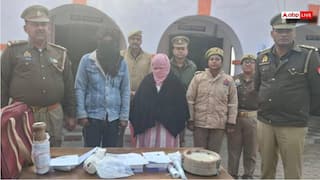'Galactic Underworld': Astronomers Find Milky Way's Graveyard Of Dead Stars
The galactic underworld corpses of once massive suns that have since collapsed into black holes and neutron stars, and reveals that almost a third of the objects have been flung out of the Milky Way.

Astronomers from The University of Sydney have created the first map of the 'galactic underworld', revealing the Milky Way's ancient dead stars. The graveyard of Milky Way's dead stars stretches three times the height of the galaxy, and indicates where the dead stars lie.
The map is a chart of the corpses of once massive suns that have since collapsed into black holes and neutron stars, and reveals that almost a third of the objects have been flung out of the Milky Way altogether.
The paper describing the findings was recently published in the Monthly Notices of the Royal Astronomical Society.
In a statement released by The University of Sydney, David Sweeney, the lead author on the paper, said these compact remnants of dead stars show a fundamentally different distribution and structure to the visible galaxy. He added that the 'height' of the galactic underworld is over three times larger than the Milky Way itself, and an amazing 30 per cent of objects have been completely ejected from the galaxy.
What happens when massive stars die?
When massive stars, more than eight times the size of the Sun, exhaust their fuel and suddenly collapse, neutron stars and black holes are formed. The collapse of a massive star triggers a runaway reaction that blows the outer portions of the star apart in a titanic supernova explosion. Meanwhile, the core keeps compressing in on itself. Depending on the starting mass of the star, it becomes either a neutron star or a black hole.
The core in neutron stars is so dense that electrons and photons are forced to combine at the subatomic level into neutrons. The total mass is squeezed into a sphere smaller than a city.
If the mass of the original star is greater than 25 times the mass of the Sun, the gravity-driven collapse continues until the core is so dense that not even light can escape. These stellar corpses warp space, time, and matter around them.
Billions of stellar corpses have been formed since the Milky Way was going. Since these exotic carcasses were flung out into the darkness of interstellar space by the supernova that created them, they slipped beyond sight and knowledge of astronomers, until now.
What the study found
The researchers at The University of Sydney constructed the first detailed map showing where the stellar corpses lie, by carefully recreating the full lifecycle of the ancient dead stars.
Professor Peter Tuthill, a co-author on the paper, said one of the problems for finding these ancient objects is that until now, astronomers had no idea where to look. He added that the oldest neutron stars and black holes were created when the galaxy was younger and shaped differently, and then subjected to complex changes spanning billions of years.
Astronomers know where to look for newly-formed neutron stars and black holes because they conform to today's galaxy. However, the oldest neutron stars and black holes are harder to find because they are like ghosts still haunting a house demolished long ago.
Tuthill said that the bones of the rare massive stars had to be out there, but they seemed to shroud themselves in a mystery.
Sweeney added that the hardest problem he had to solve in hunting down their true distribution was to account for the 'kicks' they receive in the violent moments of their creation.
He explained that supernova explosions are asymmetric, and the remnants are ejected at high speeds, up to millions of kilometres per hour. This happens in an unknown and random direction for every object.
However, knowing the likely magnitudes of the explosive clicks was not enough because nothing in the universe sits still for long. Therefore, the researchers had to delve into the depths of cosmic time and reconstruct how they behaved over billions of years.
Sweeney said that almost all the stellar remnants ever formed are still out there, sliding like ghosts through interstellar space.
Characteristic spiral arms of Milky Way missing in ‘galactic underworld’
The study authors built intricate models to encode where the stars were born, where they met their fiery end and how they were eventually dispersed as the galaxy evolved. The final outcome is a distribution map of the Milky Way's stellar cemetery.
The characteristic spiral arms of the Milky Way vanished in the 'galactic underworld'. The spiral arms are entirely washed out because of the age of most remnants, and the blurring effects of the energetic kicks from the supernovae that created them.
Why is the side-on view of the galactic graveyard ‘puffed up’?
The side-on view shows that the 'galactic underworld' is much more 'puffed up' than the Milky Way, the study said. This is due to the kinetic energy injected by supernovae elevating them into a halo around the visible Milky Way.
Dr Ryosuke Hirai of Monash University, who helped build the models, said the most surprising finding from the study is that the kicks are so strong that the Milky Way will lose some of the remnants entirely. He also said that they are kicked so hard that about 30 per cent of the neutron stars are flung out into the intergalactic space, never to return.
Tuthill added that statistically, the Milky Way's nearest remnant should only be 65 light years away from Earth.
Sweeney said he is betting that the 'galactic underworld' will not stay shrouded in mystery for very much longer.







































